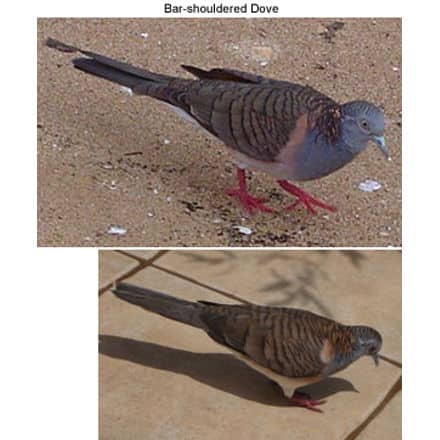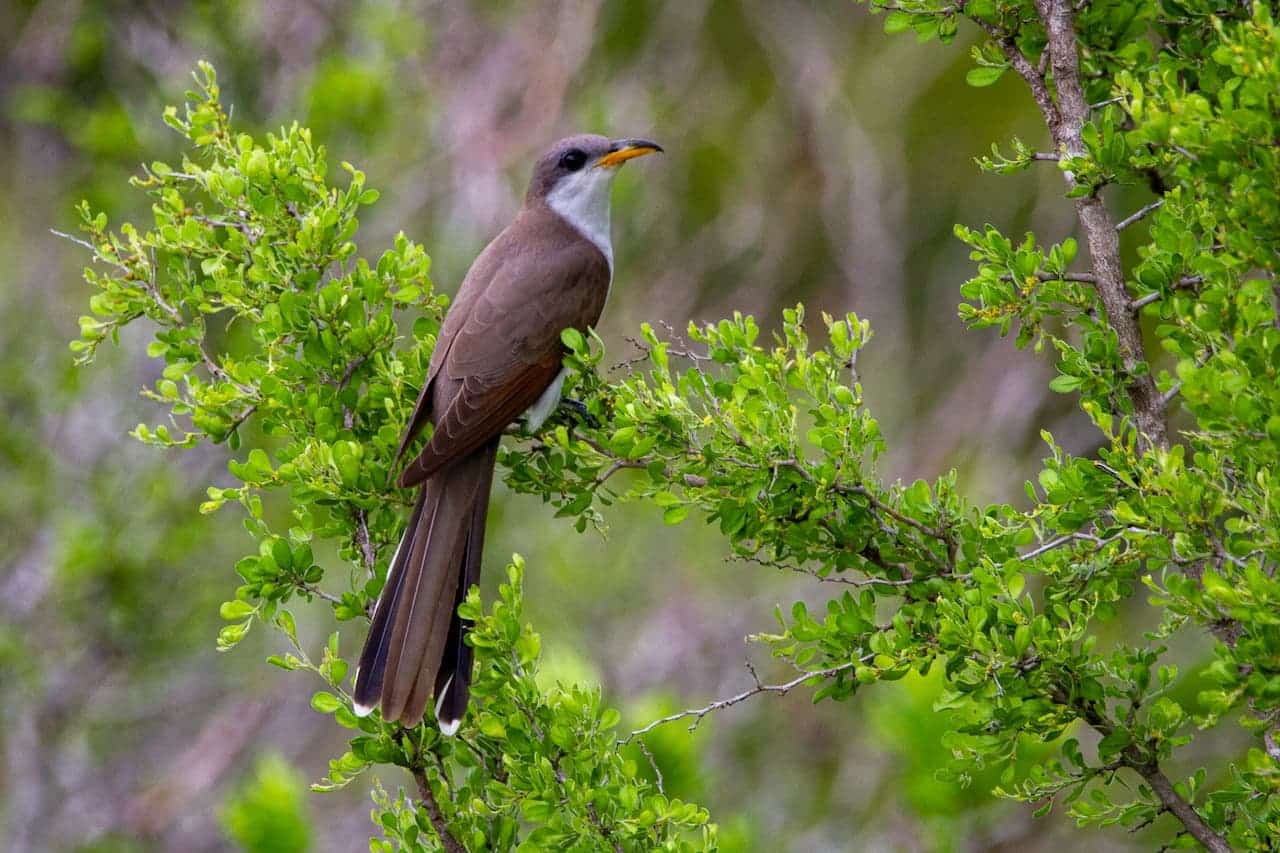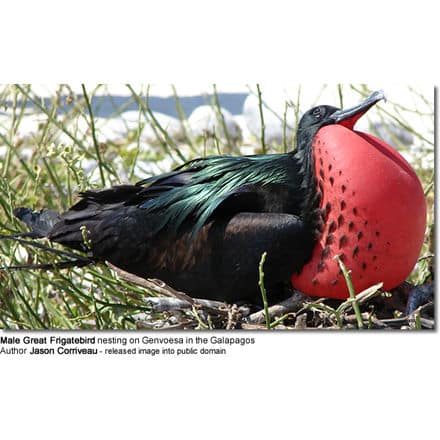Bar-shouldered Doves
The Bar-shouldered Doves (Geopelia humeralis) is native to Australia.
Description:
It is a medium-sized pigeon varying in size from 10.4 to 12 inches (26 to 30 centimeters).
This dove has a blue-grey chest with chequered brown-bronze wings. The nape (back of the neck) is similar to that of the Peaceful Dove in that the nape feathers are striated but differs in that the Bar-shouldered Dove does not have striated throat feathers like the Peaceful Dove. Furthermore, the nape feathers are copper in color.
These doves are also commonly confused with the introduced and common Spotted Turtle-Dove. The eye ring tends to be grey but red-brown when breeding. The juveniles are duller in color.

Behavior / Range:
Doves are often found in pairs, groups, or large loose flocks and are seen commonly feeding on the ground feeding on seeds. Flight is direct and swift and wings whistle while the birds are in flight.
Bar-shouldered Doves are usually found in thick vegetation where water is present, damp gullies, forests and gorges, mangroves, plantations, swamps, eucalyptus woodlands, tropical and sub-tropical scrubs, and river margins. They can be found both in inland and coastal regions.
The bar-shouldered doves are found over the east coast from Southern New South Wales (with increasing numbers in the Blue Mountains and Illawarra regions), north to the Cape York Peninsula, and west to the Pilbara region (about Onslow, Western Australia.
They have been seen increasingly in southern Australia, specifically in north-western Victoria but may have been displaced in other natural locations by introduced species. The doves have also been spotted in the Torres Strait. It is also found in other countries of the South Pacific region, such as Papua New Guinea.
Breeding:
In the southern part of its range, most breeding activities are observed from September to January and in the north from February to April. Its nest is a flat twig and grass platform that is typically placed in trees and shrubs, mangroves, or scrub. The average clutch consists of two white, glossy, and rounded eggs.
Call / Vocalization:
Its voice is described as a distinctive and melodious “cook-a-wook” or “coolicoo“.
Status:
This dove is protected under the National Parks and Wildlife Act 1974.



